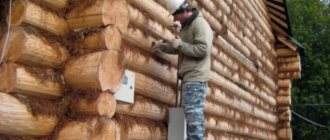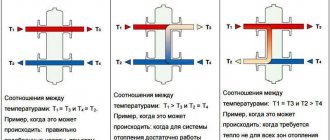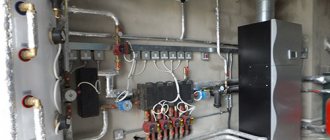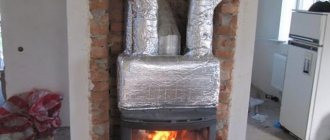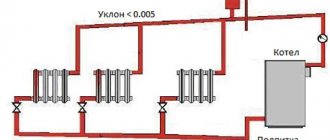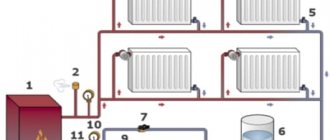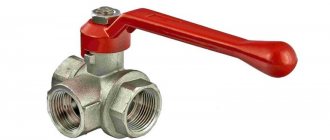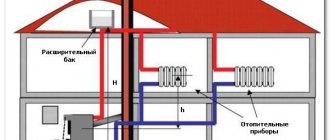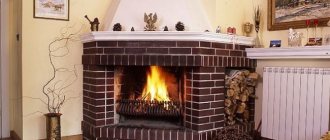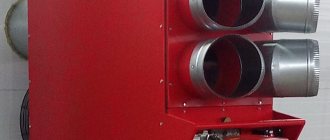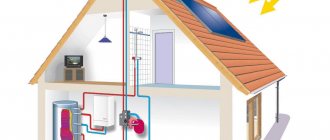0
5820
08.03.2014
How to heat a greenhouse - you ask? Before we talk about the technology of building a potbelly stove for heating a greenhouse, let's remember how pleasant it is to spend a weekend or even a whole summer at the dacha. Especially if there is a heated house and a greenhouse on the site, which is built according to all the rules and brings a rich harvest. And thanks to the stoves, neither sudden frosts nor nighttime drops in temperature are scary. Of course, speaking about heat, we immediately advise you to read about: the construction of a bubafonya furnace, as well as a furnace for mining.
Do-it-yourself potbelly stove for a summer residence
Seed preparation
Let's start by preparing our seeds for sowing. Tomato seeds are usually small. They remain similar for up to 10 years. First of all, you need to start disinfecting the seeds. Prepare the following solution: 0.3-0.5% solution of potassium permanganate (3-5 g per liter of water). And put the seeds in a gauze cloth, wrap the gauze, and put it in the solution for 0.5 hours. This is how the seeds are disinfected and all surface infection is killed.
After this, we wash the seeds in running water, and then we can do as we please. You can germinate seeds in any growth stimulants; for this we use either aloe juice or wood ash. After that washing under running water, we can keep the seeds in wood ash for half a day. Leave until the seeds germinate, and then proceed to sowing.
We plant in containers with a depth of at least 4-5 cm, we can sow tomatoes directly in the pot. We prepare the soil for preparing and growing seedlings very carefully. It is better to put 100-120 grams per bucket of soil. dolomite flour, 50 grams of any complex fertilizer or 1 tbsp. superphosphate and 1 tbsp. potassium nitrate or potassium sulfate. Mix everything thoroughly, pour water on it so that the soil is always moist. And after that we start sowing.
Sowing
We take a container with drainage holes, put in the prepared soil, water it with hot water and a solution of potassium permanganate, and then make shallow grooves of 5 mm. depth at a distance of 3-4 cm, from each other. In this container we made 3 grooves, and after that we laid out the seeds. We place the seeds at a distance of 0.5 cm, without deepening them and not too close to the surface. Half a centimeter is the optimal depth for sowing tomato seeds for seedlings.
After sowing, the seeds can be covered with moist soil, but it is better to do this: add sand to the soil and cover it evenly.
Heating a greenhouse using an underground chimney from a stove
The design of the stove, the foundation, and the brickwork around the firebox remain unchanged. But the chimney will lie in the soil, and not be on supports under the roof of the greenhouse.
Chimney from a potbelly stove underground
The distance between adjacent parallel pipes should be within 60-100 cm. The depth of the pipes is 25-40 cm. The pipes are laid at an angle in dug trenches, covered with crushed stone or expanded clay. The ends of the pipes lead outside the greenhouse. Thus, warm air from the potbelly stove enters the pipes, heats the soil and air, and smoke from fuel combustion is discharged outside without entering the greenhouse space.
A DIY potbelly stove for a summer residence is a budget-friendly and quick way to increase the amount of harvest and protect it from unfavorable natural conditions. With properly installed heating, roses will bloom thickly in country greenhouses, and cucumbers, bell peppers, grapes and other fruits of heat-loving crops will be on the table.
Microgreenhouse
The seeds are sown and after sowing the container must be placed in a warm place at a temperature of 20-25 degrees. You can make a small microgreenhouse: take a plastic bag, place a container with seedlings in it, making sure there is air in the bag. We will get such an airy micro-greenhouse, which we will place in a warm place.
After 3-4 days, if the seeds are good and the germination energy is also good, we will have seedlings. The moment the loop appears on the sprouts is the most important in growing the first seedlings. We must remove the container from the bag and place it in the brightest place, so that the loops stretch in the light, grow faster, and the temperature must be lowered, at night to 14-15 degrees, during the day to keep it at 18 degrees. After 2-3 weeks we will have good grown plants, after which we will start picking.
When we look at a plant, we do not notice and do not know that it is at this moment, when the plant has formed 2-3 true leaves, that the tubercle of the first flower raceme is formed in the growth cone itself. A very important moment comes when we are in a hurry with sowing and sow in February or early March, then it is at this moment that the plant finds itself in unfavorable conditions, this is very insufficient illumination. And this flower tubercle will not be initiated precisely because of these conditions, but the growth of leaves will be initiated. The seedlings are elongated.
Central wood stove
The simplest option is to install a primitive homemade stove in the middle of the greenhouse, which is popularly called a “potbelly stove.” Such a unit is made, for example, from a barrel laid on its side, equipped with legs, an opening for storing fuel with a door and a chimney leading through the roof. By inviting a welder you know, the furnace can be made in a couple of hours.
The simplicity of the device is the only advantage of this solution, but it has many disadvantages:
- uneven heat distribution. It’s warm near the stove, cool away from it. If you heat the unit in the far corners of the greenhouse, it will be too hot nearby;
- When fuel burns, the oxygen concentration drops. It is necessary to increase ventilation, which reduces the heating efficiency even more;
- inconveniences associated with storing firewood. If you keep them outside, heat loss increases due to frequent opening of the door to add another load (this has to be done every 2-3 hours). Storing fuel inside a greenhouse takes up space and also encourages pest growth.
A potbelly stove manufactured according to all standards is quite economical when properly fired: its efficiency reaches 60%.
About sowing dates
When should you sow seedlings? A lot of literature has been written on how long seedlings should be kept. Some people think it’s 50, others 60 days from the beginning. But there is no need to rush at all. Seedlings that are obtained later still catch up with the previously planted seedlings, and they turn out good and strong.
Good seedlings are grown in the right light and temperature, they are compact, the leaves are closely spaced, and they have a thick stem. Containers for growing seedlings can be different, plastic bags or pots, other devices, but a prerequisite is that the volume must be at least 0.5 liters. and not very high capacity.
The subtleties of installing a stove with your own hands
When installing a stove, the most important thing is to make the chimney correctly.
The diameter is selected in accordance with the power (calculation using a special method is required). The minimum height of the chimney (vertical distance from the grate to the top) is 5 m. The stove is placed on a fireproof covering with the latter extending at least 300 mm from the rear and sides, and from the combustion door side - at least 600 mm. The minimum distance from a wall made of flammable material is 0.5 m.
This distance can be reduced if the wall is treated with a non-flammable coating, for example, vermiculite plaster.
Picking
Tomatoes take root well, so when picking, be sure to deepen them, then the plants’ root system develops well and the stem becomes thick. In the center of the picking container you need to make a depression, place the seedling vertically, deepen it down to the cotyledon leaves, pressing the soil tightly so that there is immediate contact with the root system. The soil in the container does not reach the edges, keep about 3 cm. This was done specifically so that when growing seedlings, bedding could be made.
And then comes caring for the seedlings. If the weather is cloudy outside, then it is very good to lower the temperature to 14-15 degrees, so that the seedlings do not stretch out.
Feeding seedlings
If we have good soil, then fertilizing can be done only as needed. If we see that the plant is very pale, then this will tell us about a lack of nitrogen. You can use nitrogen fertilizers (urea, ammonium nitrate), but it is better to use a small concentration of fertilizer when watering, water not just with water, but with a small content of nutrients, based on a teaspoon of complex mineral fertilizer per 1 liter of water. Tomatoes are very responsive to phosphorus and potassium, so it is necessary to periodically extract superphosphate and fertilize with only phosphorus.
Arrangement of seedlings
We take the seedlings and arrange them so that all the plants get the light and the leaves of the seedlings do not intertwine or even touch. This is necessary to provide light and warmth. This will be the best care.
The plant is growing and needs to be planted in time in the main soil - greenhouse soil from the container, because the stems can stretch out enough and even 2-3 fruits will form on one cluster, and the plant itself will spend entirely on the formation of these particular fruits. We constantly remove small stepsons. The upper stepson can be left; it forms a second stem located next to the flower stem.
When transporting to the dacha, so that the plants do not break and feel comfortable, try not to water the seedlings a few days before transportation; it is better to dry them, the stems will not be brittle and the plant will better tolerate a stressful situation.
From the middle or end of May, you can safely begin planting tomato seedlings in a film greenhouse or greenhouse. If you have a warm greenhouse, heated, and if you have a warm heated bed, using biofuel, based on plant residues, then you can start planting tomatoes in early May. It all depends on the specific greenhouse and weather conditions.
A prerequisite for good production and good fruiting is that soil and bed preparation must be carried out immediately before planting tomato seedlings. We dig up the ridge, loosen it, level it with a rake, then you need to add mineral fertilizers so that fruiting is abundant and good.
Myths about long-burning stoves
Recently, marketers have begun to classify a special type of non-volatile heaters, designed for operation in smoldering mode, as this type. Example: stoves “Professor Butakov”, “Buleryan”, etc. Indeed, with a limited air supply through an adjustable throttle, the fuel smolders instead of burning and therefore the unit can work on one load for up to 8 hours.
But the unit has a number of disadvantages:
- fuel is consumed extremely irrationally: when smoldering, it does not burn completely and a significant part of it literally flies down the chimney;
- The heat release power in the smoldering mode is very low (the characteristics indicate the power in the combustion mode);
- The exhaust in smoldering mode is cold, so condensation forms abundantly in the chimney. The latter, due to incomplete combustion of fuel (smoke contains many heavy hydrocarbon radicals), is a toxic cocktail that is even prohibited from being poured into the ground near edible vegetation;
- The unit smokes heavily in smoldering mode.
Marketers call such furnaces pyrolysis, since their design includes a compartment for afterburning gases. This is a reason to call such a unit economical. But this is a fiction: at such temperatures there is practically no pyrolysis.
In general, such stoves are intended for field conditions where there is no power supply: they enable a team, for example, lumberjacks (Buleryan was created for them), to sleep at night without worrying about firewood. In greenhouses, if such stoves are used, it is in combustion mode, like an ordinary potbelly stove.
Greenhouse layout
The optimal width of the bed for planting tomatoes should be 80 cm, and 40 cm between the beds. And then we proceed to applying fertilizers.
- First of all: (taking into account that the soil is mostly acidic) add dolomite flour at the rate of 100-150 g. per square meter. We pour armfuls out of the bucket; you should have rubber gloves on your hands in any case. This is an additional feeding not only with calcium, but also with magnesium.
- Secondly: The next fertilizer that a tomato needs is superphosphate. They add 50-80 grams, sometimes up to 100 grams. per square meter. Superphosphate is a sparingly soluble fertilizer, but you should not be afraid that there will be a root burn of the system, because then we will mix everything and level it out. And even if the granules are visible, do not be afraid, the plant will not get burned.
- In the 3rd turn: Then we apply complex fertilizer Kemira Universal or Nitrofoska 50 g to the soil. per square meter. if you have a little fertilizer available, you can then apply it directly into the hole.
And mix the bed thoroughly. The soil must be pre-moistened so that fertilizers dissolve well, and tomatoes love a sufficient amount of moisture, especially when planting. The soil is wet not only in the bed itself, but even between the beds, the distance, more precisely 40 cm wide, in the place where you walk, should be wet. All soil in the greenhouse must be moistened.
Converter installation: advantages and disadvantages
It is no secret that by growing vegetables in a greenhouse, you can fully provide your family with vegetables and fresh herbs, and also have a good income from their sale. However, it should be borne in mind that in winter it is necessary to expend a huge amount of energy to maintain a greenhouse.
In areas where the cost of electricity and gas is quite high, heating greenhouses with wood becomes the best heating option.
A converter installation will allow you to minimize the financial costs of heating a room of any configuration and size. The boiler can be installed directly in the greenhouse or taken out to a separate room adapted for a boiler room. The heat generated in the boiler is transferred through steam or water circulating through the pipes. The pipes can be laid in the ground or simply made into a circuit that heats the air.
Of course, in order to install a converter unit, you will have to purchase and install a boiler, and make a design for the distribution of pipes and radiators. The work will cost a significant amount. However, the ability to grow vegetables in a greenhouse will quickly cover the costs. The cost will be significantly reduced if you use dry firewood rather than coal and special fuel briquettes for this purpose.
Scheme of a long-burning furnace.
Heating a greenhouse with wood is quite a labor-intensive job, since it is necessary to constantly monitor the operation of the installation, add fuel to the boiler, and clean out the ashes. Nevertheless, the solid fuel system is quite popular due to its comparative efficiency. By the way, it is better to use dry hornbeam or oak wood in converter installations, which provide more heat compared to other tree species.
In addition, properly executed wiring will allow heat to be retained in the pipes for a long time. Therefore, there is no need to add wood to the firebox every hour.
The disadvantages of heating with wood include uneven heating of the space. Heated air masses accumulate in the dome part, where the highest temperature is recorded. The soil warms up the least. Some of the heat easily leaves the room, penetrating through the ceiling.
An important point is the marking of the ridge
The feeding area of tomato plants depends on the planting scheme. And the feeding area depends on the variety, low-growing standard varieties can be planted more densely, at the rate of 4-5 plants per square meter, and tall varieties and hybrids no more than 3 plants (like cucumbers) per 1 square meter.
Let's make holes: since seedlings can also be different, they can be well grown, or they can be overgrown, then first we will mark the holes for properly grown seedlings. Let's take a medium-sized tomato variety called Garant. We make holes at a distance of 25-30 cm, dig a shovel full of bayonets and you can add wood ash into the holes, take one armful per hole, tomatoes are very fond of especially the pre-sowing application of wood ash.
In addition, tomatoes also love excess good moisture when planting. We will deliver Kemira Universal. And we’ll water it very generously, just fill the holes with water. If the seedlings are weakened, pale yellow, etc., add ash fertilizer and complex fertilizer and lightly mix everything. And after that we pour water with potassium permanganate from a watering can, an intensely colored one, it’s very good if the water is hot. The soil is also disinfected and the plant immediately falls into warm soil, it takes root very well.
- Soil cultivation: everything you need to know before sowing and after harvesting (91 photos)
- Downy mildew of cucumbers: methods for identifying the disease at an early stage and processing vegetables (79 photos)
- Cladosporiosis of tomatoes - what is it and how to fight it in greenhouses? 69 photo ideas
You don’t even have to wait for all the moisture to be absorbed, we’ve already watered it beforehand, and now we’ve watered it well with a solution of potassium permanganate, we lower the seedlings into this hole, bury it, and cover it with soil. It’s not without reason that they say that tomatoes love when their feet are damp, but their heads are always dry. This rule must always be remembered, especially when watering tomatoes, so that water does not fall on the leaves when watering.
We bury the seedlings in the hole until the first true leaves are planted and compact the soil.
If you leave for a long time after planting, to avoid evaporation, you can not water after planting, but mulch with either peat or compost. It is enough to add 1 cm of compost to prevent evaporation.
But tall varieties of tomato, hybrid tomato, of course, can be planted less frequently, at the rate of 3 plants per 1 square meter. We make holes for them of the same depth, i.e. on the bayonet of a shovel, but the distances between plants are somewhat larger, essentially the same as when planting a cucumber.
We do all the other techniques and fertilizers and watering and everything else in exactly the same way. This is Kemero and wood ash. We plant elongated and overgrown plants in holes, first remove all the leaves (one day, two days before planting) and make not a hole, but a small ditch, pour ash and some kind of complex fertilizer, mix, pour water and potassium permanganate into the ditch and proceed for landing.
We plant lying down, this technique is known to many, we don’t bury it very deeply, because the soil is cold deeper, into a ditch to a depth of about 10-15 cm from the surface and fill it up to the 1st leaf that we left below. And now the seedlings are planted, they take root, and in a week they will definitely need to be tied up.
- Treatment of tomatoes (51 photos): fungus, viruses, cladosporiosis, fusarium, macrosporiosis and other diseases
- Ants in a greenhouse (65 photos): how to remove them quickly and safely? Tips, instructions and recommendations
- Treatment of cucumbers: best advice from professional farmers. Effective technique (52 photos)
Standard varieties Nevsky and Baltiysky, which form very compact plants, are planted in three rows in a bed 80cm wide. We mark the plants 15-20 cm apart.
We prepare the holes as always. When planting tall and medium-sized varieties of tomatoes, the soil is also generously shed with water or a solution of potassium permanganate. You should try to grow low-growing standard varieties in one mass, and tall varieties in another mass, so as not to interfere with others.
If it is not possible to plant in different beds, then you can do this: plant standard varieties on one edge of the massif ridge, tall-growing varieties in another array, and medium-growing varieties in the third array. It is better, of course, to do this in different beds in the same greenhouse.
If you do not have enough seedlings, then you can plant determinate varieties, such as Bely Naliv, Tambovsky Urogozny, Selskaya Rannyaya, and many varieties, less frequently, but then the formation must be carried out in three stems. This means stepsoning. We leave stepchildren who have grown up and have strength.
Scheme for planting tomato seedlings:
- – Standard varieties of tomatoes: 6-8 plants per 1 sq.m.
- – Medium-sized varieties: 4-6 plants per 1 sq.m.
- – Tall varieties: 3-4 plants per 1 sq.m.
How to protect tomato plants from the first frost? Place arcs over the bushes and lay lutrasil (non-woven synthetic material made of polypropyl fiber) for insulation and protection from the May cold, and during the day when it is warm it is advisable to remove the lutrasil to avoid overheating.
Let us remind you that it is necessary to maintain a certain temperature, lighting, caring for plants, treating with fertilizers, if necessary, fertilizing, carrying out pinching correctly, not allowing the plants to freeze or overheat, observing the watering regime, etc.
Growing tomatoes, like other crops, in greenhouses with good care and constant attention brings great benefits, it is a rich harvest, the opportunity to learn all the pros and cons in specific conditions, enjoy your results, and have your work recognized by your loved ones and friends. Good results and excellent harvest!
- How to spray tomatoes to get maximum efficiency when harvesting? 71 recipe photos
- Aphids on cucumbers (68 photos): monitoring plant health in greenhouse conditions. Instructions from gardeners!
- Late blight on tomatoes: description of methods for protecting and increasing the resistance of tomatoes (102 photos)
Furnace models
Vologda
- The principle of operation resembles a gas generator; such a stove for a long-burning greenhouse is economical to operate and has high heat output.
- It is enough to do the laying of firewood two to three times a day. Depends on the volume of the firebox and the overall size of the device.
Thanks to this, the equipment has received a great advantage, since there is no need to constantly be near the firebox and monitor the combustion. Vologda efficiency is approximately 80%.
The coolant enters from the rear through specially installed flexible hoses that connect the device to the water tank. The liquid heats up to 60 degrees from zero in 40 minutes.
There are models that can simultaneously heat a greenhouse and a residential building, in which the heat will be distributed through water heating radiators. The instructions that come with the model describe this process in detail.
Plus
It should be noted that the process of switching from the gas-generating state to the normal heater mode is easy. Therefore, the equipment can also be used for baths.
Minus
Requires periodic liwa.
Buleryan
It is used quite rarely for greenhouses and greenhouses. A convection type oven can maintain the desired temperature for a long time.
Works on regular firewood and wood products. Naturally, the price of such a device is higher than a regular “potbelly stove”.
"Bulleryan" in the greenhouse
Minuses
- Temperature regulator not installed.
- Not very convenient to install.
- The firebox needs to be monitored frequently.
In appearance it resembles a horizontal barrel, with exhaust pipes located at the bottom and top. The smallest model is capable of passing up to 5 m3 of air per minute, but the body, coated with special paint, does not heat up.
Slobozhanka
The design is well suited for a small room. You can do it yourself without the help of helpers.
Previously
- Take a thick-walled pipe, make longitudinal grooves in it with a “grinder” or “autogen”. This will be a special device for uninterrupted air supply and activation of fuel combustion.
Air duct from a 100 mm pipe
- Install a metal penny made of 5 mm steel at the bottom of the device, which will act as a gate, and it will be possible to regulate the oxygen supply to the furnace.
Device for regulating air supply to the furnace
- Make a chimney in the upper part of the firebox from a piece of pipe with a diameter of 100 mm to remove combustion products.
- Take a thick-walled metal cylinder with a diameter of 250 mm.
- Cut a 100 mm hole in the center of a thick-walled steel sheet and weld it to the pipe of the future air duct.
- Make a heat-dissipating disk from a 10 mm thick sheet of metal that will be installed inside the device.
